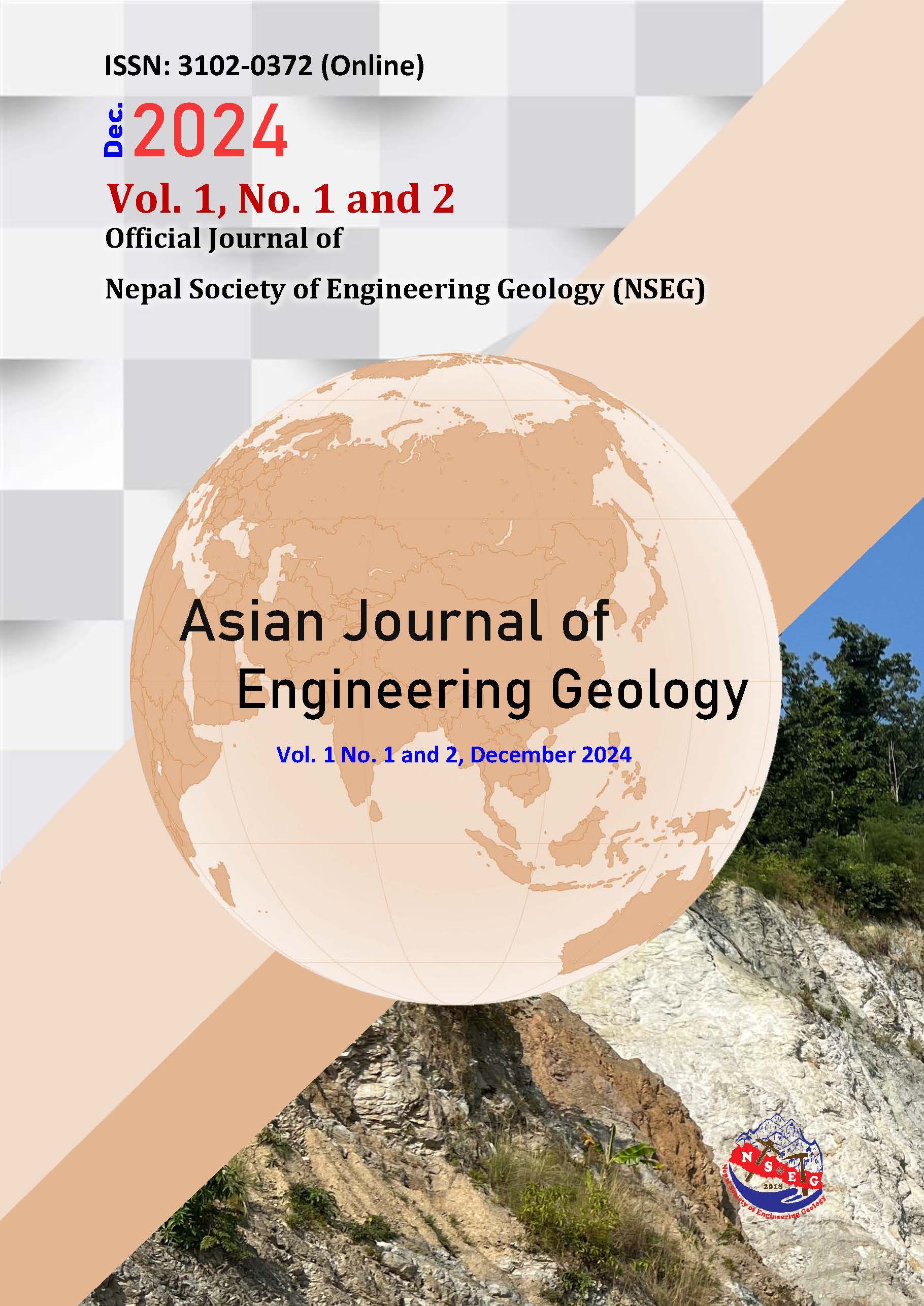Comparative Analysis of Rainfall Thresholds for Landslide Initiation Using Terrestrial Rain Gauges and Satellite Data in Nepal: Challenges and Opportunities
Keywords:
Landslides, Landslide early warning system, Rainfall thresholds, Automatic weather station, Satellite rainfall productAbstract
Landslides triggered by intense monsoon rainfall pose a significant hazard in Nepal, leading to substantial loss of life and property. The implementation of Landslide Early Warning Systems (LEWS) based on rainfall thresholds can help mitigate these impacts. These thresholds, which specify the minimum rainfall required to trigger landslides, are essential for effective disaster risk reduction. This study investigates the uncertainties surrounding rainfall threshold definitions for landslide forecasting in Nepal, primarily due to the limited number of Automatic Weather Stations (AWS). It emphasizes the shortcomings of gauge measurements, including their sparse distribution, lack of high temporal resolution, high costs, and delayed reporting. The study also highlights the growing accuracy and potential of satellite rainfall products, which provide higher spatial and temporal resolution, comprehensive coverage, and no missing data. However, it addresses the challenges of developing LEWS using satellite data and recommends enhancing the network of rain gauges and improving landslide documentation systems. Additionally, the comparison of rainfall thresholds indicates that those derived from AWS are slightly higher than those from satellite data, suggesting that terrestrial rain gauges may indicate a greater rainfall requirement for landslide initiation.
References
Dahal R.K. and Hasegawa S. (2008). Representative rainfall thresholds for landslides in the Nepal Himalaya. Geomorphology, 100, 429-443.
Guzzetti F., Peruccacci S., Rossi, M. and Stark C.P. (2008). The rainfall intensity–duration control of shallow landslides and debris flows: an update. Landslides, 5, 3-17.
Melillo M., Brunetti M.T., Peruccacci S., Gariano S. L., Roccati L. and Guzzetti F. (2018). A tool for the automatic calculation of rainfall thresholds for landslide occurrence. Environmental Modelling and Software, 105, 230-243.
Pradhan A.M.S., Maharjan B., Silwal S., and Sthapit S. (2020). Preparation of landslide catalogue (1970-2019) of Nepal, WRRDC Research Letter, 02, 1-2.
Zhao, B., Dai, Q., Zhuo, L., Mao J., Zhu S. and Han D. (2022). Accounting for satellite rainfall uncertainty in rainfall-triggered landslide forecasting. Geomorphology, 398, 108051.
Published
Data Availability Statement
Data are available upon request with First Author.
Issue
Section
License
Copyright (c) 2024 Nepal Society of Engineering Geology (NSEG)

This work is licensed under a Creative Commons Attribution 4.0 International License.




